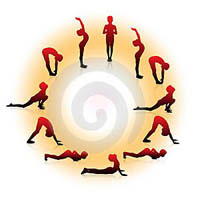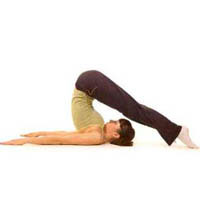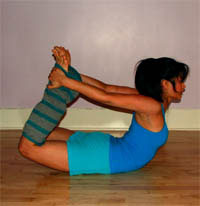Padmasana is a kind of Yogic Asana. It is known as lotus position in English is a sitting posture where you need to sit cross-legged for the purpose of meditation. This position ensures an upward divine flow of energy. Let us look on how you can practice this Yogic Asana.
Procedure for Padmasana
Sit on the floor and stretch your legs in the front. Now, bend your right knee and with the help of both of your hands grip your right foot and then place the right foot on your left thigh as close as possible to your navel position.
Once done, do the same thing with your left leg. Bend your left knee and with the help of both of your hands grip your left foot and place it on the top of the right thigh, and as much as possible, place this leg close to the navel.
Once you finish these steps, your knees should be touching the ground and soles of both of your feet should be pointing upwards. You should keep your spine straight but don’t stiffen it.
You can alter the position of the legs if you feel uncomfortable by sitting in the same position for a long time.
You place both of your hands on your knees either your palms facing down. It is known as ‘Gyana Mudra’. You can also place your hands with both palms on each other and touch the navel area and on the upward facing of both of your feet.
Duration for performing the Padmasana
 The duration for practicing Padmasana depends on you on how long you are capable of performing this asana. However, this Asana should not be practiced beyond the limitations of the body. As you increase the days of practicing there will be an automatic increase in the stretching of knees and duration of sitting in the comfortable position.
The duration for practicing Padmasana depends on you on how long you are capable of performing this asana. However, this Asana should not be practiced beyond the limitations of the body. As you increase the days of practicing there will be an automatic increase in the stretching of knees and duration of sitting in the comfortable position.
Benefits of practicing Padmasana (lotus position)
The Padmasana or the lotus position helps to maintain concentration, relaxation and meditation. Padmasana helps to strike a natural balance between the body and mind. As you go on practicing Padmasana, there is an automatic and effortless stretching of knees, which helps to soothe the nervous system, promotes quiet spirit and maintain a state of sharpness.
Baddha Padmasana, a form of Padmasana which involves slight changes in the placement of hands helps to improve the flexibility in chest, shoulder, thigh, waist, shoulder and spine. It corrects the problem of curvature in arthritis and spine and is very efficient in treating digestive problems and constipation.

 up of twelve postures in all which need to be performed on a continuous basis and that too with synchronized breathing. There are numerous benefits of performing the Surya Namaskara. It activates all the
up of twelve postures in all which need to be performed on a continuous basis and that too with synchronized breathing. There are numerous benefits of performing the Surya Namaskara. It activates all the  This
This  means
means  stomach, kidneys, pancreas, liver, gallbladder and small intestines. When practiced regularly, this Asana can help to treat various problems such as constipation, diabetes, hay fever, sinusitis, menstrual disorders, bronchitis and urinary tract disorders.
stomach, kidneys, pancreas, liver, gallbladder and small intestines. When practiced regularly, this Asana can help to treat various problems such as constipation, diabetes, hay fever, sinusitis, menstrual disorders, bronchitis and urinary tract disorders. on a regular basis. It’s because; Surya Namaskara increases the blood supply to almost all the parts of the
on a regular basis. It’s because; Surya Namaskara increases the blood supply to almost all the parts of the  Regular practicing of Halasana,
Regular practicing of Halasana,  body. It provides a deep massage to
body. It provides a deep massage to  The duration for practicing Dhanurasana depends on
The duration for practicing Dhanurasana depends on